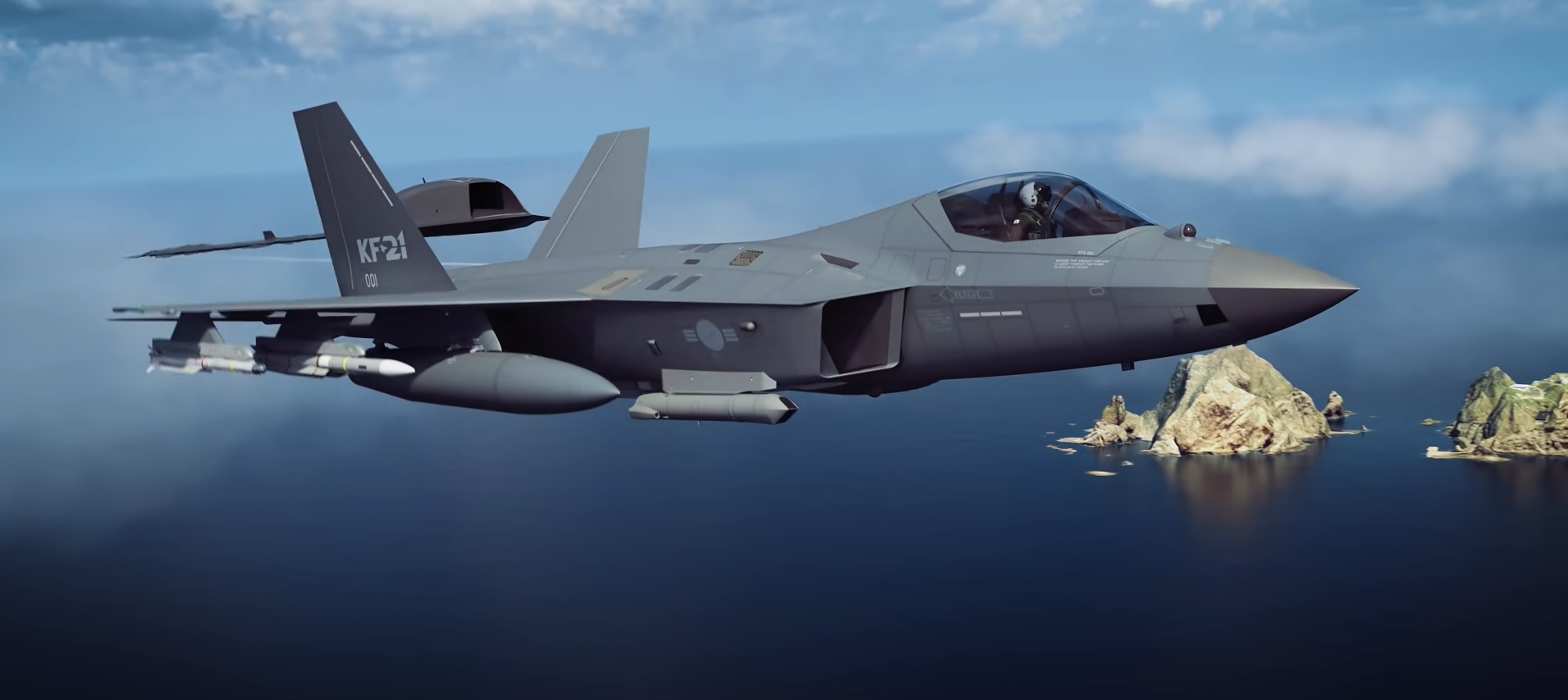The CEO of Korea Aerospace Industries (KAI) has categorized the KF-21 Boramae as a “4.9th generation” fighter jet, aligning it more closely with the advanced fifth-generation fighters instead of the widely accepted 4.5 generation classification.
In a detailed interview with a Korean-language daily, KAI CEO Kang Goo-young elaborated on the KF-21’s unique features and superior performance.
The KF-21 Boramae, which began development nine years ago, has reached a significant milestone. South Korea recently signed a deal with KAI to produce 20 units. These fighter jets are slated for initial delivery to the Republic of Korea Air Force (RoKAF) by the end of 2026.
The aircraft is poised to serve as the foundation of the South Korean Air Force’s future fighter fleet, significantly contributing to the modernization and improvement of its capabilities in the years ahead.
CEO Kang elaborated on the aircraft’s standout features and its competitive edge over other modern fighters. Kang said that labeling the KF-21 as a 4.5-generation fighter underestimates its capabilities.
F-16s “Sitting Ducks” For Russian MiG-31 Fighters? Putin Warns Of Consequences Over Fighting Falcons
Kang, a retired Air Force lieutenant who previously flew the F-4 fighter jet, said, “They say the KF-21 is a 4.5-generation fighter, but I think that’s an underestimation. Compared to the 4.5-generation French Rafale and the European Eurofighter Typhoon, its performance is superior. So, I call it a 4.9-generation fighter, which is closer to the 5th generation (a fighter with full stealth capabilities).”
He cited the aircraft’s radar cross-section (RCS), which indicates its stealth performance is lower than that of its competitors, positioning it closer to the 5th-generation fighters.
The KF-21 distinguishes itself from other fighter jets through its incorporation of Fourth Industrial Revolution technologies, including artificial intelligence (AI) and big data.
Kang argued that while the Rafale and F-16 were originally third-generation models upgraded to the 4.5th generation, the KF-21 was designed to evolve into the fifth and potentially the sixth generation from its 4.5th generation base.
This forward-thinking design approach makes the KF-21 the only 4.5-generation fighter developed in the 21st century. It incorporates advanced features like the Active Electronically Scanned Array (AESA) radar (called the ‘eye of a fighter’) and various electronic warfare equipment.
Huge Export Potential Of South Korea’s KF-21
The rapid development and anticipated delivery of the KF-21 have drawn considerable attention, with many experts viewing it as a potential star in the international export market.
This enthusiasm stems from South Korea’s achievements as a key global weapon exporter, notably with the FA-50 fighter jet securing several major export contracts over the past decade.
Now, South Korea is positioning the KF-21 to compete against formidable rivals such as the French Rafale, the US-made F-16 and F-15, and the Eurofighter Typhoon.
One of the key advantages of the KF-21, as noted by Kang, is its cost-effectiveness, being approximately 30-40% less expensive than its competitors. Efforts are also underway to further reduce the price through enhanced automation processes.
The South Korean official said that South Korea’s successful track record with previous fighter jets has spurred considerable interest in the KF-21 from various regions, including Southeast Asia, the Middle East, and Europe.

It is “rare” for countries to seek information on fighter jets that are still under development, a trend typically reserved for US aircraft. This level of inquiry reflects the KF-21’s growing international appeal and the increasing recognition of South Korea’s defense capabilities.
The FA-50, T-50 advanced trainers, and KT-1 basic trainers have already been exported to countries like Indonesia, Poland, Malaysia, Iraq, Peru, and Turkey.
South Korea now aims to accelerate the export of the KF-21 and the Surion mobile helicopters. By 2030, the goal is to have Korean aircraft operating across all continents.
At recent Farnborough Air Show exhibitions, KAI showcased scale models of the KF-21, FA-50, and the Surion helicopter. The booth saw a marked increase in visitors from European countries, including the UK, Switzerland, Spain, Austria, and Poland.
Meet One Of World’s ‘Weakest Air Forces’ That Boasts Rafale, Typhoon, F-15EX Jets & Now Eyes F-35s
Kang disclosed that high-ranking officials from Western Europe, who had previously shown little interest, are now engaging with KAI, particularly regarding their need for high-tech trainer aircraft to complement their advanced fighters like the F-35A.
Further, as highlighted by the EurAsian Times, nations that are currently operating the FA-50 have expressed a strong interest in the KF-21, recognizing its potential to enhance their air combat capabilities.
The KAI CEO also noted that several Middle Eastern nations are showing notable and increasing interest in the FA-50. Meanwhile, with the successful export of the FA-50 to Poland, KAI has established a foothold in the European market.
The next major target is the US market, the largest in the world. The US Air Force and Navy are anticipated to launch large-scale projects involving around 500 aircraft.
Kang revealed that KAI was investing heavily and preparing meticulously to compete for these contracts, which would significantly drive the company’s growth.
The US government is expected to begin these projects in 2028, and KAI is already laying the groundwork to capitalize on these opportunities.
- Contact the author at ashishmichel(at)gmail.com
- Follow EurAsian Times on Google News




